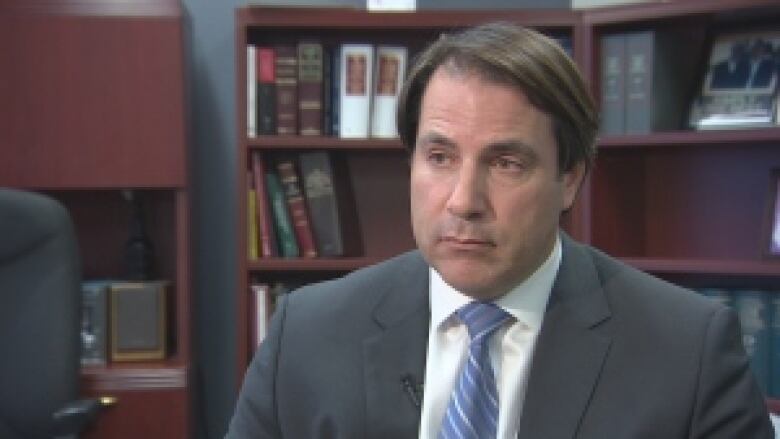Ontario roads safest in country but drivers pay the highest premiums, new report says
Despite safer roads, Ontario premiums are 24% higher than Alberta's and 100% higher than Quebec's

A new comprehensive review of the auto insurance industry in this province has found that while Ontario's roads are among the safest in North America, Ontario drivers pay the highest premiums in the country.
The report, written by former Workplace Safety and Insurance Board CEO David Marshall and released on April 11, found that Ontario drivers pay an average insurance premium of $1,458per vehicle, which adds up to $10 billion a year.
-
Auto insurance rates down in Ontario, but drop falls short of province's target
-
Insurance industry warns 'vigilance' needed to keep tow fees from boosting rates
-
Auto insurance rule change costs injured man millions in rehab support
Yet the report, called Fair Benefits Fairly Delivered: A Review of the Auto Insurance System in Ontario, found that while premiums here are well above the national average of $930, the province's roads arethe safest in the country.
That's no surprise to Nesakan Thavarajah and his girlfriend Sirini Wijesekera. The two recent grads can't afford to cover their own car insurance premiums so they are still listed as occasional drivers under their parents' plans.
"So many people are reluctant to go through insurance if something does happen because they're scared their premiums will go up," said Thavarajah.

He said he recently had a stone chip on his windshield and asked his insurance agent if he should make a claim.
"She toldme,'You know you can, but off the record I'm telling you don't do it because it'll make your premiums go up,'" Thavarajah said.
In 2013, Ontario's injury rate (62.1 per 10,000 licensed drivers) was the lowest in Canada and the province's fatality rate (0.54 per 10,000 licensed drivers) was the second lowest in all of North America.
That's not reflected in premiums that are 24 per centhigher than Alberta's ($1,179) and double what drivers in Quebec pay ($724).

Marshall wrote that despite consistent reductions in automobile accidents, especially serious ones, the cost of claims have consistently risen, thanks to "one of the least effective insurance systems in Canada."
Steve Kee, a spokesperson with the Insurance Bureau of Canada, said Marshall's report is a welcome first step in improving the insurance system in the province, which has a hybrid structure: it's a government-mandated service delivered by private industry.
The report recommended that Ontario steer clear of switching to a government-run auto insurance system.
'A lot of medical costs and costs to lawyers'
"We have a regulated market in terms of the product we sell, delivered by private insurers. It's worked well and will continue to serve Ontario drivers," said Kee.
As for the high cost to drivers, Kee said it's a complicated system with many moving parts.
"Claims costs are high and there are a lot of people that are involved in the process and I don't know why claims costs are as high in Ontario as they are. There are a lot of medical costs and costs to lawyers," said Kee.
"We've seen a reduction in collisions, roads are safe in Ontario and cars are safer to drive so we'd like to see claims costs come down as well."
Marshall wrote that there is a significant amount of leakage of funds from the system from claims totaling about $1.4 billion a year, with much of those insurance benefits not going directly to those involved in accidents.

"Insurers shared with me that it is taking them over a year to close even the simplest claims [and]accident victims are having a difficult time getting what they perceive to be fair benefits," wrote Marshall.
He also points out that "one out of three accident-benefits claims goes into a dispute resolution system."
Marshall recommends that, "Insurers should make sure that seriously injured persons are given top priority and do not need to hire lawyers or other professionals to get their entitlement."
Lawyers an 'essential part' of the system
Personal injury lawyer Mike Smitiuch says the problems with the insurance system shouldn't be blamed on the province's lawyers.
"Lawyers play anessential part inholding insurers accountable and obtaining justice for individuals, so to paint all lawyers with the same brush is I think a mistake and dangerous to do," said Smitiuch.
"Lawyers are being blamed for driving up costs, but lawyers are essential because insurers are denying and forcing [customers]to prove why they need the benefits."
For example, Marshall points out that the determination of whether or not an accident victim fits what's known as the catastrophic injury definition is extremely important, since the benefits payable to an accident victim judged to fit that categoryare many times higher $1 million vs. $65,000..

Tens of thousands of dollars in the range of $15,000 to $20,000 are spent by the claimant and the insurer on medical reports to arrive at or challenge a determination.
"The process to access benefits is so complex, the accident victim often hires a lawyer in order to properly access them. What can happen then, is the accident victim may ultimately find themselves with significantly less than the $1-million benefit to which they were entitled, since this amount would be partially reduced by the cost of medical exams and legal fees," writes Marshall.
The report recommends the Ministry of Health and Long-Term Care develop a service to assess the costs for lifetime management of care for seriously injured accident victims.
But Smitiuch says that was tried before.
"Independent evaluators in hospitals to mediate disputes was an utter failure," he said. "It reminds me of that movie Groundhog Day. We're going back to past and living it over and over again."












_(720p).jpg)


 OFFICIAL HD MUSIC VIDEO.jpg)
.jpg)



























































































